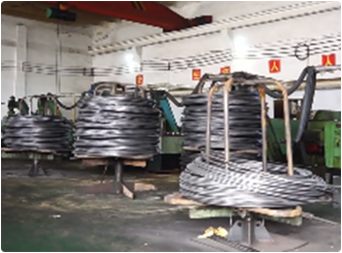Ara . 05, 2024 03:39 Back to list
Lead Sleeve Anchor for Enhanced Structural Stability and Load Distribution
Understanding Lead Sleeve Anchors A Comprehensive Guide
Lead sleeve anchors, also known as lead-in anchors, are essential components in construction and engineering, known for their reliability and ease of installation. They are specifically designed to create secure attachments in various materials, including concrete, masonry, and other solid substrates. This article delves into the characteristics, applications, and installation processes of lead sleeve anchors, providing a thorough understanding for both professionals and DIY enthusiasts.
What are Lead Sleeve Anchors?
Lead sleeve anchors are a type of expansion anchor used to fasten items to concrete or masonry. The anchor consists of a metal bolt and a lead sleeve. The lead sleeve is designed to expand when the bolt is tightened, gripping the sides of the hole drilled into the base material. This mechanism allows for a robust and secure hold, making lead sleeve anchors suitable for load-bearing applications.
Key Features and Benefits
1. Durability Lead sleeve anchors are typically made of high-strength steel, which significantly enhances their durability. This makes them suitable for use in harsh environments, where resistance to corrosion and wear is essential.
2. Load Capacity These anchors can support substantial loads when installed correctly, making them ideal for heavy-duty applications. They are often used in attaching items like shelves, cabinets, or structural elements.
3. Easy Installation One of the significant advantages of lead sleeve anchors is their ease of installation. They do not require special tools, aside from a standard drill and wrench, which makes them accessible for both professionals and DIY users.
4. Versatility Lead sleeve anchors can be used in a variety of materials, including concrete, brick, and stone, expanding their usability across different construction projects.
5. Non-Removable Once installed, lead sleeve anchors create a permanent bond with the base material. While this is a benefit in terms of security, it’s important for users to note that they are not designed for easy removal.
Applications of Lead Sleeve Anchors
Lead sleeve anchors are highly versatile and find applications in numerous construction contexts
. Some common uses includelead sleeve anchor

- Structural Attachments Used for securing structural elements like beams and columns. - Furniture Assembly Ideal for anchoring heavy furniture units to walls, ensuring stability and safety. - Signage and Lighting Fixtures Often employed to mount signs or light fixtures to concrete walls, providing a solid hold. - Masonry and Concrete Applications Perfect for attaching items to both reclaimed and new masonry surfaces.
Installation Process
Installing lead sleeve anchors is a straightforward process but requires careful attention to detail to ensure effectiveness. Here’s a step-by-step guide
1. Determine the Location Identify the exact spot where the anchor will be installed. Ensure it is in a suitable area of the concrete or masonry.
2. Drill a Hole Use a hammer drill and a masonry bit to make a hole in the base material. The diameter of the hole should match the size of the lead sleeve anchor.
3. Clean the Hole Remove any dust or debris from the drilled hole. A clean hole is essential for the anchor to grip effectively.
4. Insert the Lead Sleeve Place the lead sleeve into the drilled hole. If it fits snugly, it should not require excess force.
5. Insert the Bolt Place the bolt through the item you are securing and into the lead sleeve.
6. Tighten the Bolt Use a wrench to tighten the bolt. As you do this, the lead sleeve expands, anchoring itself into the material. Ensure it is tight but avoid over-tightening.
7. Check Security Once installed, give the fastened item a gentle tug to ensure it is secure.
Conclusion
Lead sleeve anchors are a reliable and versatile solution for anchoring various items in concrete and masonry. Their durability, ease of installation, and load capacity make them an excellent choice in numerous applications, from heavy-duty structural support to simple furniture assembly. By following the correct installation process, users can ensure a secure and lasting hold, providing peace of mind in their construction or DIY projects. As with any installation, proper assessment of the materials involved and the desired load capacity is crucial for achieving optimal results.


